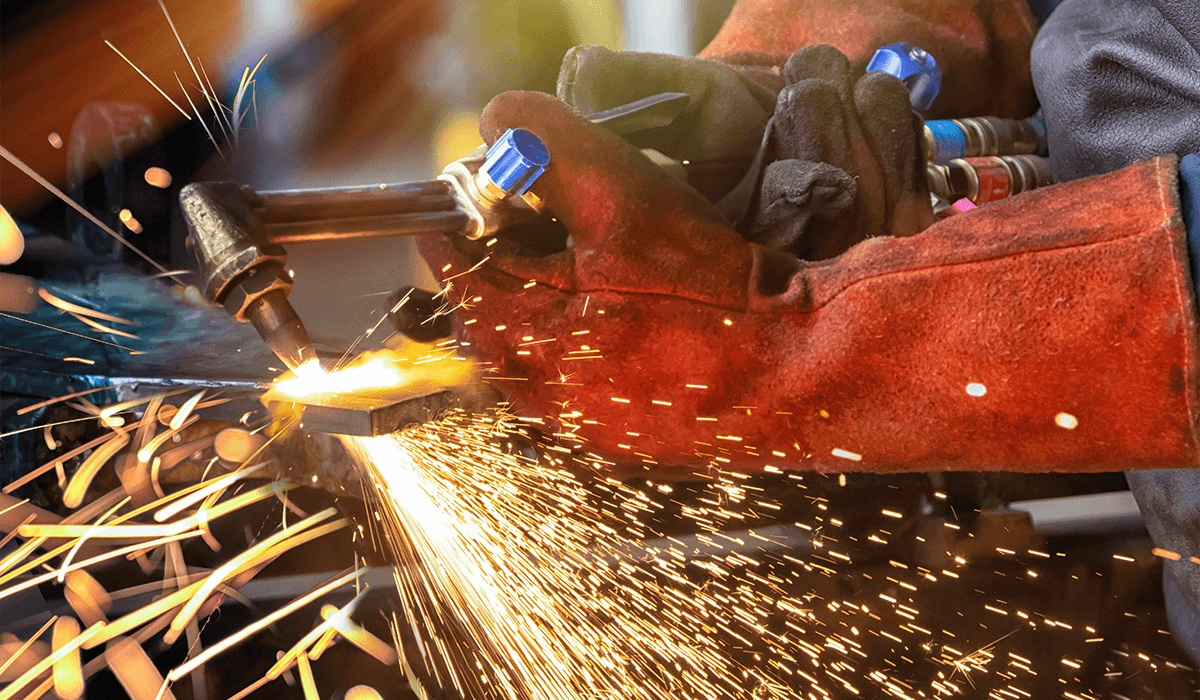
Chances are, you’ve heard the horror stories about welding dissimilar metals. Taking the right precautions during these dangerous welds can mean the difference between improving your process piping system and causing long-term headaches.
Luckily, if you take a few minutes now to understand the hazards and advantages of welding different metals, you can save time, money, and productivity in the future.
In this article, we dig into the nitty-gritty of the welding process and outline the dos and don’ts of welding dissimilar metals.
Why Is Welding Important?
When done right, welding can be miraculous. It allows you to alter structures in the field and support new pipe runs without having to completely replace piping. If you need to connect metal, expand a piping system, or redirect pipe flow, welding may be your best option.
Still, it’s important to keep welding to a minimum whenever possible. Welds slice into your piping system. That means these welded areas, although valuable, add weak spots to pipes, and they can be vulnerable to corrosion.
Why Weld Dissimilar Metals?
You may already understand the dangers of combining dissimilar metals. Because metal can have wildly different properties, fusing the wrong dissimilar metals together can cause corrosion or flimsy connections.
However, the very fact that metals have different properties often inspires welders to connect dissimilar metals. In some cases, it’s cost-effective or convenient to mix and match different metals.
For instance, you may use aluminum in your system because it’s light and resistant to corrosion. However, aluminium tends to be more expensive than other strong metals, such as steel. So you may decide to weld steel to aluminum in order to save on costs or add durability.
Regardless of the combination, welding different metals can be a way to get more out of a metal’s unique properties.
What to Consider When Welding Dissimilar Metals
Welding dissimilar metals is a touchy process. If you don’t weld with care, you could end up with destroyed piping or massive corrosion problems. Here are some factors to consider when welding dissimilar metals.
Melting point: Dissimilar metals can melt at drastically different temperatures. For instance, steel generally won’t melt until it heats up to around 1,370°C (2500°F) . Aluminium, on the other hand, starts melting around 660°C (1220°F). In most cases, you’ll want to modify your welding technique to make sure metals are melting and fusing together smoothly.
Thermal expansion rates: When they heat up or cool down, different metals will expand and contract at different rates. If the two welded metals’ thermal expansion rates are too different, it could increase the welded point’s residual stress. That means your connection will be up against extra pressure and be more highly vulnerable to breaks.
Galvanic corrosion: Galvanic corrosion can spread quickly and destroy metal. This electrochemical reaction kicks off when metals with different anodic and cathodic properties get together. That’s why it’s important to separate reactive metals with a buffer, neutral joint, or nonmetallic support.
End environment: A metal’s environment can drastically affect its durability. For instance, if unprotected metal, such as carbon steel, is left in salt-heavy air, it can cause corrosion. It’s a good idea to consider where a metal will be operating and all of the corrosive elements that it will be up against. In some cases, metal may need protective coatings or galvanizing to avoid corrosion.
Dos and Don'ts When Welding
Here’s a quick overview of best practices to keep in mind when you’re welding dissimilar metals.
Do ...
Use Transition Materials
If the metals you’re welding have different electrochemical properties, you may want to separate them with a transition material. This will keep noble metal from pulling electrons out of more basic metals.
Limit Welding
As helpful as welding is, it’s a good idea to remember that with every weld, you’re upping the potential for weak spots and corrosion in your piping system. In some instances, you can use supports, such as repads, to limit welds. In other cases, it may be possible to use pipe shoes, wear pads, or other supports to bypass welding altogether.
Research Metals
Not sure if the materials you’re working with are compatible? Stop and take a minute to do some research before you weld. Here are some groups that provide standards for welding materials:
- American National Standards Institute (ANSI)
- American Society of the International Association for Testing and Materials (ASTM International)
- American Society of Mechanical Engineers (ASME)
Don’t ...
Directly Connect Incompatible Metals
If you directly connect metals that have different electrochemical properties, it could cause galvanic corrosion. If metals are incompatible, it’s important to use a buffer or surface protection to keep metal from corroding.
Underestimate Metallic Properties
Remember, metals can have different melting points, conductivity, strengths, and malleability. All of these factors can contribute to the durability of your weld and the performance of your piping system.
Rule Out Alternatives to Welding
In many cases, welding may seem like a simple solution. However, before melting your piping system’s metallic surfaces, it’s worth asking if there are adjustable supports or other creative alternative products that can strengthen your system.
Pick Up Tips to Improve Your Piping System
Want to stay up to date with the latest tips, tricks, and secrets to increasing the lifespan of your process piping system? Subscribe to our blog for insider advice about pipe supports and the piping industry.






